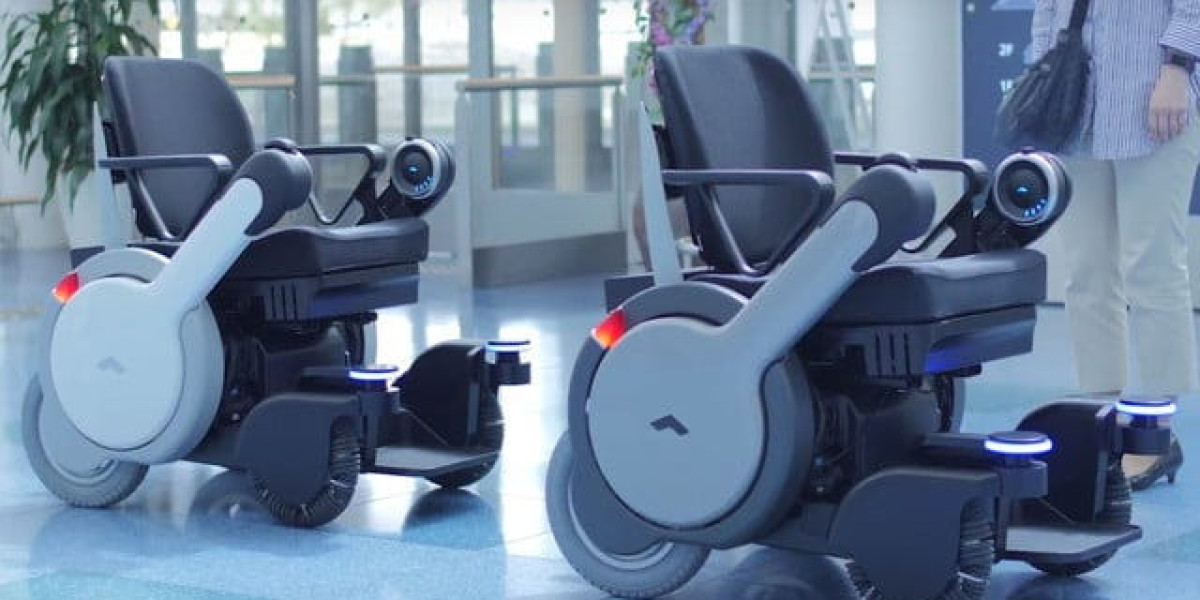Introduction
Robotic wheelchairs represent a major leap forward in assistive technology, offering users enhanced autonomy, safety, and comfort through smart automation and intelligent controls. Designed to support individuals with physical disabilities or mobility impairments, these advanced wheelchairs leverage innovations such as AI-based navigation, sensor integration, voice commands, and real-time obstacle avoidance. As populations age and the demand for accessible mobility solutions grows, robotic wheelchairs are transforming lives and expanding independence.
Growth and Market Outlook
According to Straits Research, the global robotic wheelchair industry size was valued at USD 96.7 billion in 2021 and is projected to reach USD 224.8 billion by 2030 at a CAGR of 9.83% from 2022 to 2030. This strong growth is mainly driven by rising awareness, technological advancements in AI and robotics, and increasing prevalence of mobility-limiting conditions associated with aging and chronic diseases.
Technological Trends and Innovation
AI and Sensor Fusion: The most significant advancements come from integrating AI algorithms with multi-sensor systems (LIDAR, ultrasonic, cameras) enabling autonomous navigation, improved obstacle detection, and real-time route planning for safer mobility.
Voice-Activated Controls: Voice recognition interfaces enhance user experience by allowing hands-free command input, enabling users to control directions, speed, and chair adjustments verbally.
Augmented and Virtual Reality: AR overlays help users track navigation paths and spatial surroundings better, especially in complex indoor or outdoor environments.
Advanced Battery Technologies: Improvements in lithium-ion and solid-state battery capacity extend wheelchair operational times, reduce charging intervals, and promote eco-friendly use with efficient energy management.
Ergonomic and Customizable Design: Modular seating arrangements, pressure relief systems, and adaptive controls improve comfort and reduce secondary health risks like sores or fatigue.
Integration with Healthcare and Monitoring: Robotic wheelchairs equipped with health sensors monitor vital signs, posture, and movement patterns, allowing coordination with healthcare providers and caregivers for better care.
Market Leaders and Their Innovations
Permobil (Sweden/USA): A pioneer in power wheelchairs, Permobil has recently introduced models with enhanced wheelchair intelligence (WI) systems incorporating AI-driven navigation and cloud connectivity for remote monitoring.
Ottobock (Germany): Known for combining mobility robotics and prosthetics, Ottobock launched robotic wheelchairs with augmented voice control and natural user interfaces focused on user autonomy.
Invacare Corporation (USA): Offers smart power wheelchairs with advanced obstacle avoidance systems and app integration for personalized settings and diagnostics.
Sunrise Medical (UK): Introduced lightweight, foldable robotic wheelchairs with enhanced maneuverability, targeting both urban and indoor mobility markets.
WHILL, Inc. (Japan/USA): Combines smart robotics with compact designs that navigate narrow corridors and rough terrains, improving both indoor and outdoor usability.
Quantum Rehab (USA): Innovated power wheelchairs with advanced seating solutions and collision avoidance technology to enhance safety for elderly users.
Regional Insights and Adoption
North America: Leading in R&D and consumer adoption driven by healthcare infrastructure, research funding, and a high number of aging individuals requiring assistive technologies.
Europe: Countries like Germany, Sweden, and the UK emphasize regulatory support and innovation funding to promote accessibility devices. Their healthcare systems promote widespread use of advanced robotic wheelchairs.
Asia-Pacific: Rapid urbanization, increasing disposable incomes, and government initiatives for inclusive healthcare fuel robotic wheelchair adoption in China, Japan, South Korea, and India. Local startups focus on affordability and rural accessibility.
Latin America: Emerging healthcare infrastructure improvements and NGO support programs raise demand for mobility aids, although affordability and distribution remain challenges.
Recent News and Industry Developments
The University of Michigan researchers unveiled CoNav, a ROS-based smart robotic wheelchair framework in early 2025, enhancing navigation autonomy in complex environments through AI and sensor integration.
Permobil expanded its robotic wheelchair portfolio with advanced cloud-connected models offering AI-powered diagnostics and remote software updates.
Industry collaborations between AI software firms and wheelchair manufacturers are gaining traction, aiming to develop ride-sharing and healthcare integration features.
Increasing integration of augmented reality applications assists visually impaired users with navigation cues in daily mobility.
Advances in battery technology led by solid-state solutions promise lighter, longer-lasting, and faster-charging wheelchairs vital for continuous urban and outdoor use.
Challenges and Opportunities
Cost remains a significant barrier limiting access to advanced robotic wheelchairs, particularly in developing countries. Training healthcare professionals on device use and maintenance and navigating regulatory standards are also ongoing challenges.
However, opportunities abound with an aging global population, growing rehabilitation needs, and heightened awareness around accessibility. The convergence of AI, robotics, and cloud technologies offers transformative potential for personalized mobility solutions that cater to diverse user needs and environments.








